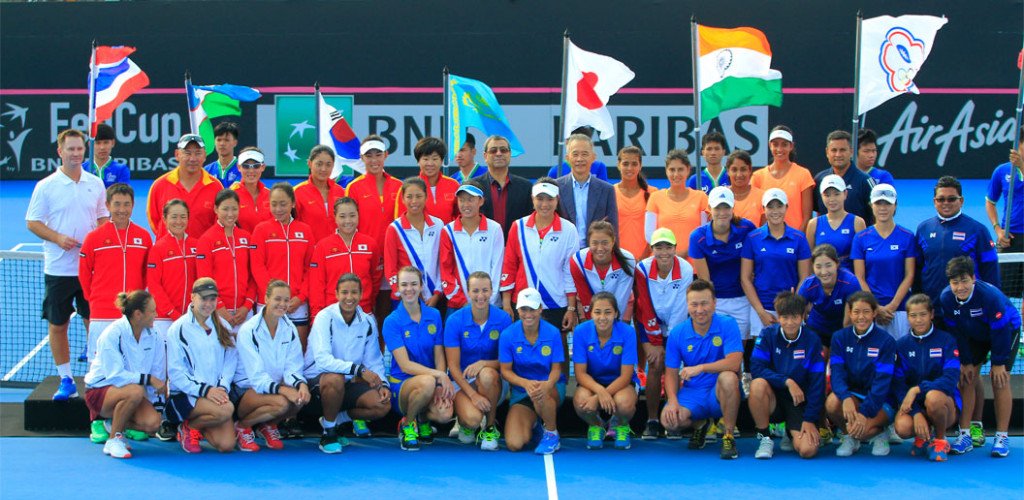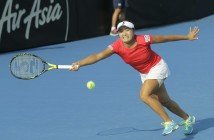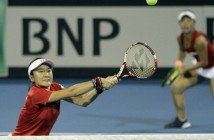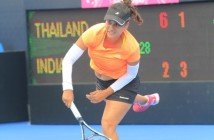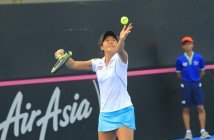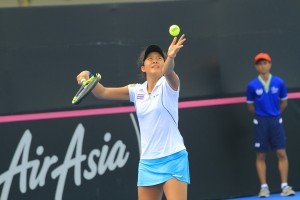 Thailand, and more specifically, Hua Hin, had the marvellous honour of hosting the Fed Cup women’s tennis tournament this year. From the third to the sixth of February, the Asia / Oceania Zone’s draw was played out at the fantastic True Arena Hua Hin sports facility, and there was plenty of excitement to go around.
Thailand, and more specifically, Hua Hin, had the marvellous honour of hosting the Fed Cup women’s tennis tournament this year. From the third to the sixth of February, the Asia / Oceania Zone’s draw was played out at the fantastic True Arena Hua Hin sports facility, and there was plenty of excitement to go around.
The Fed Cup has a rich history, one which began fifty-four years ago, with as little as sixteen teams and no prize money for the eventual winner. The first ever game was held between the United States and Australia, which saw the former eventually clinch the title. The Aussie’s however, would have the last laugh, (for a while, at least) as they would go on to win seven of the following eleven championships, an era of dominance in the tournament.
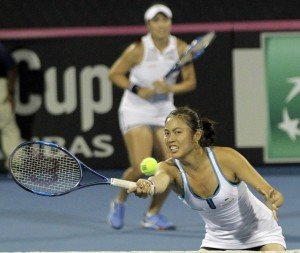 Born from an urge to create a Davis Cup for women, the Federations Cup, as it was known until 1995, is women’s tennis’ most praised international tournament, today contested by almost one hundred nations. The United States has won the most titles at seventeen, a record it set with its utter dominance during the eighties. But it last won the cup at the turn of the millennium, after which the dominance would switch to southern and eastern European nations. Italy, Russia and the Czech Republic have won twelve of the last sixteen editions, the latter of which is now the second most successful nation in the history of the cup and the current champion.
Born from an urge to create a Davis Cup for women, the Federations Cup, as it was known until 1995, is women’s tennis’ most praised international tournament, today contested by almost one hundred nations. The United States has won the most titles at seventeen, a record it set with its utter dominance during the eighties. But it last won the cup at the turn of the millennium, after which the dominance would switch to southern and eastern European nations. Italy, Russia and the Czech Republic have won twelve of the last sixteen editions, the latter of which is now the second most successful nation in the history of the cup and the current champion.
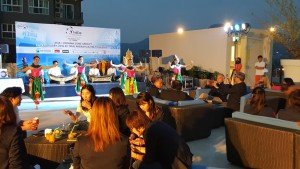
 On February 1st, the best tennis players from Thailand, China, Japan, Chinese Taipei, Korea, Kazakhstan, India and Uzbekistan all converged on Hua Hin staying at the InterContinental Hua Hin Resort. The teams had several days to practice and acclimate to the heat. On Tuesday February 2nd, Khun Suwat Liptapanlop, President of the Lawn Tennis Association of Thailand, welcomed all teams during an evening party at the Hawk Eye Roof Top Club atop True Arena.
On February 1st, the best tennis players from Thailand, China, Japan, Chinese Taipei, Korea, Kazakhstan, India and Uzbekistan all converged on Hua Hin staying at the InterContinental Hua Hin Resort. The teams had several days to practice and acclimate to the heat. On Tuesday February 2nd, Khun Suwat Liptapanlop, President of the Lawn Tennis Association of Thailand, welcomed all teams during an evening party at the Hawk Eye Roof Top Club atop True Arena.
In an intense four-day tournament of play, the eight teams that were represented were divided into two separate pools. These consisted of the Japan, Uzbekistan, India and the hosts Thailand in the first group A and China, neighbouring Chinese Taipei, South Korea and Kazakhstan in the second group B. They played three pool games each and were ranked from one to four on a performance basis, which left the hosts top of group A, followed by Japan, India in penultimate place and Uzbekistan last. Group B saw Chinese Taipei get the better of their mainland rivals, who came second to them. Third was Kazakhstan, with South Korea coming last, being too the only nation not to win a pool game. Subsequently, there was a cross playoff for first place, in which the two top teams from Pool A, Thailand and Japan, played each other with Japan taking the match. There was no need for a playoff for Pool B because Chinese Taipei never lost a match. The final game was hotly contested but eventually Chinese Taipei emerged as the victor over Japan to go on to the World Group ll play offs in April of this year.
The event was a big success and definitely made for great entertainment for those who attended the free four-day tournament.


